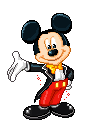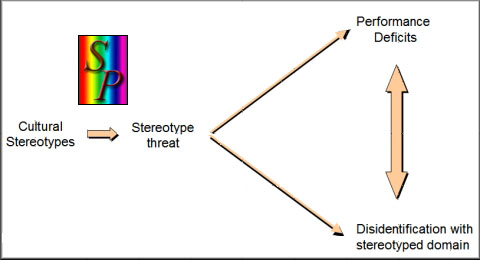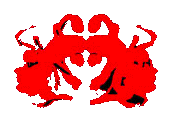|
|

|
Ψ Prejudice: Disliking others
|

|
|
What is the nature & power of prejudice?
Ψ Prejudice: A preconceived negative judgment or opinion of a group & its individual members.
Ψ Prejudice is a negative attitude. Discrimination is a negative behavior.
Ψ Stereotype: A belief about the personal attributions of a group of people. Stereotypes are often overgeneralized & inaccurate. They are resistant to new information
Ψ In the U. S. racial & gender prejudice has significantly declined. It still exists both in subtle, unconscious forms as well as in overt, conscious forms.
What are the social sources of prejudice?
Ψ Unequal Status breeds prejudice.
Ψ Social Dominance Theory is a social psychological theory of group conflict which describes human society as consisting of oppressive group-based hierarchical structures. According to the theory, individual people possess varying levels of preference for social dominance, which can be measured by the social psychological measure Social Dominance Orientation.
Ψ Ethnocentrism: the tendency to believe that one's ethnic or cultural group is centrally important, & that all other groups are measured in relation to one's own.
Ψ The authoritarian personality does not want to give orders, their personality type wants to take orders. People with this type of personality seek conformity, security, stability. They are very intolerant of any divergence from what they consider to be the normal (which is usually conceptualized in terms of their religion, race, history, nationality, culture, language, etc.)
Ψ Conformity: Once established, prejudice is maintained
largely by inertia. If prejudice is socially accepted, most will follow the path of least resistance & conform to fashion. If prejudice is nor deeply ingrained in personality, then as fashions change & new norms evolve, prejudice will diminish.
Ψ Institutional Supports: Social institutions such as schools, government, & the media may increase prejudice through overt polices such as segregation, or by passively reinforcing the status quo.
What are the motivational sources of prejudice?
Ψ Frustration & aggression:
• The Scapegoat Theory: When problems occur, people do not like to blame themselves. They will thus actively seek scapegoats onto whom they can displace their aggression. Scapegoats may be out-group individuals or even entire groups. Powerless people who cannot easily resist will often become victims of scapegoating. Scapegoating increases when people are frustrated & seeking an outlet for their anger.
|

|
• The Realistic Group Conflict Theory: When there are limited resources, then this leads to conflict, prejudice & discrimination between groups who seek that common resource. “Whenever there are not enough resources to meet the needs of two or more groups, there is a realistic probability that intergroup relations will deteriorate” Carr (2003)
Ψ Social Identity
• Social Identity Theory: proposes that the membership of social groups & categories forms an important part of our self concept.
• We categorize all groups.
• We identify (associate) with ingroups.
• We compare our
social group with outgroups.
• Ingroup bias is the preferential treatment people give to whom they perceive to be members of their own groups.
• Terror management theory (TMT) suggests that people adhere to cultural worldviews & beliefs in order to suppress death & mortality-related thoughts.
What are the cognitive sources of prejudice?
Ψ Spontaneous Categorization: We stereotype when
• Pressed for time
• Preoccupied
• Tired
• Emotionally aroused
• Too young to appreciate diversity
Ψ Perceived similarities & differences
• Outgroup homogeneity effect: The tendency to perceive out-group members as "they are all alike" compared to the in-group is called the out-group homogeneity effect. We do see diversity in our own group.
Ψ Distinctiveness: Distinctive people & vivid or extreme
occurrences often capture attention & distort judgments. This sometimes breeds stereotypes.
Ψ Attribution: The just-world phenomenon, refers to the tendency for people to believe that the world is "just" & so therefore people "get what they deserve." It wrongly colors our impression of "victims" of any sort.
What are the consequences of prejudice?
Ψ Sterotypes are Self -Prepetuating!
• Subtyping: Accommodating individuals who deviate from one's stereotype by thinking of them as "exceptions to the rule".
• Subgrouping: Accommodating individuals who deviate from one's stereotype by forming a new stereotype about this subset ot group.
Ψ The self-fulfilling prophecy: where a belief (often false) is accepted as truth, & in stating it, becomes true.
Ψ Stereotype threat is "the threat of being viewed through the lens of a negative stereotype, or the fear of doing something that would inadvertently confirm that stereotype," such as the stereotype that women perform poorly in math. Steele explains that some students try to escape stereotype threat by disidentifying with the part of life in which the stereotype originates, such as race or ethnic identities. The article defines what an academic community can do to reduce or completely eliminate stereotype threat - increase the degree of racial trust, or the assurance of racial fairness in assessment. From: "Thin Ice: 'Stereotype Threat' and Black College Students," by Claude M. Steele, The Atlantic Monthly http://www.theatlantic.com/issues/99aug/9908stereotype.htm

Ψ Do stereotypes bias the judgments of individuals?
• YES, but … individuals are evaluated more positively than their groups.
• Strong stereotypes matter.
• Stereotypes bias interpretations & memories.
Social Psychology
Robert C. Gates
|

|
|
 “We are each burdened with prejudice; against the poor or the rich, the smart or the slow, the gaunt or the obese. It is natural to develop prejudices. It is noble to rise above them. ” “We are each burdened with prejudice; against the poor or the rich, the smart or the slow, the gaunt or the obese. It is natural to develop prejudices. It is noble to rise above them. ”
~ Author Unknown
|
|















